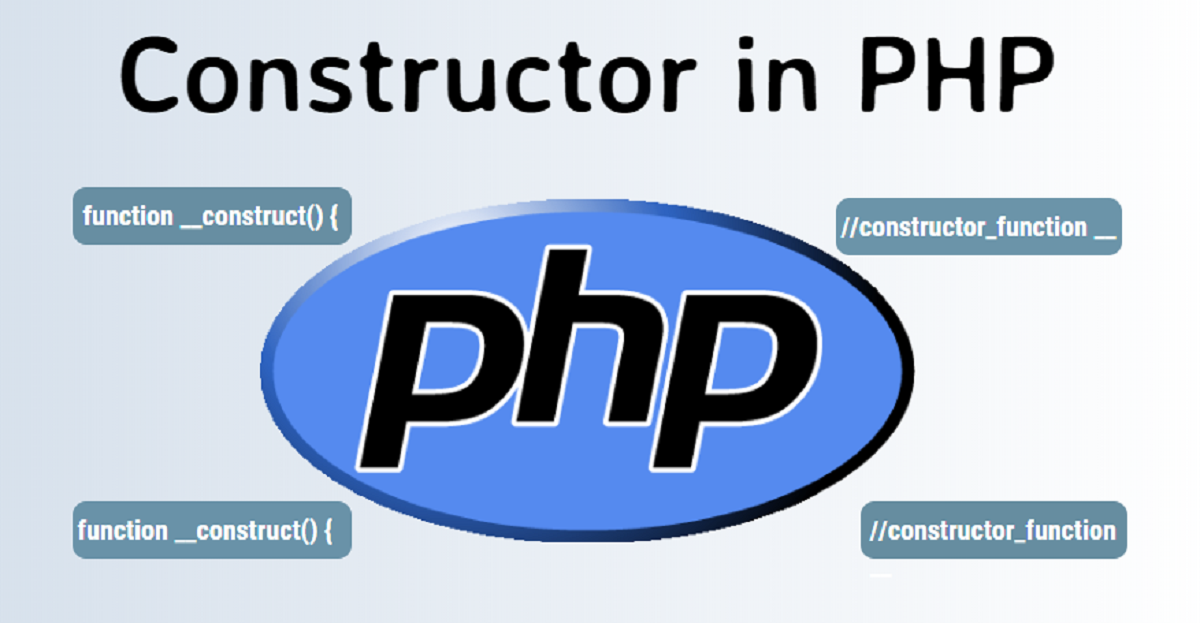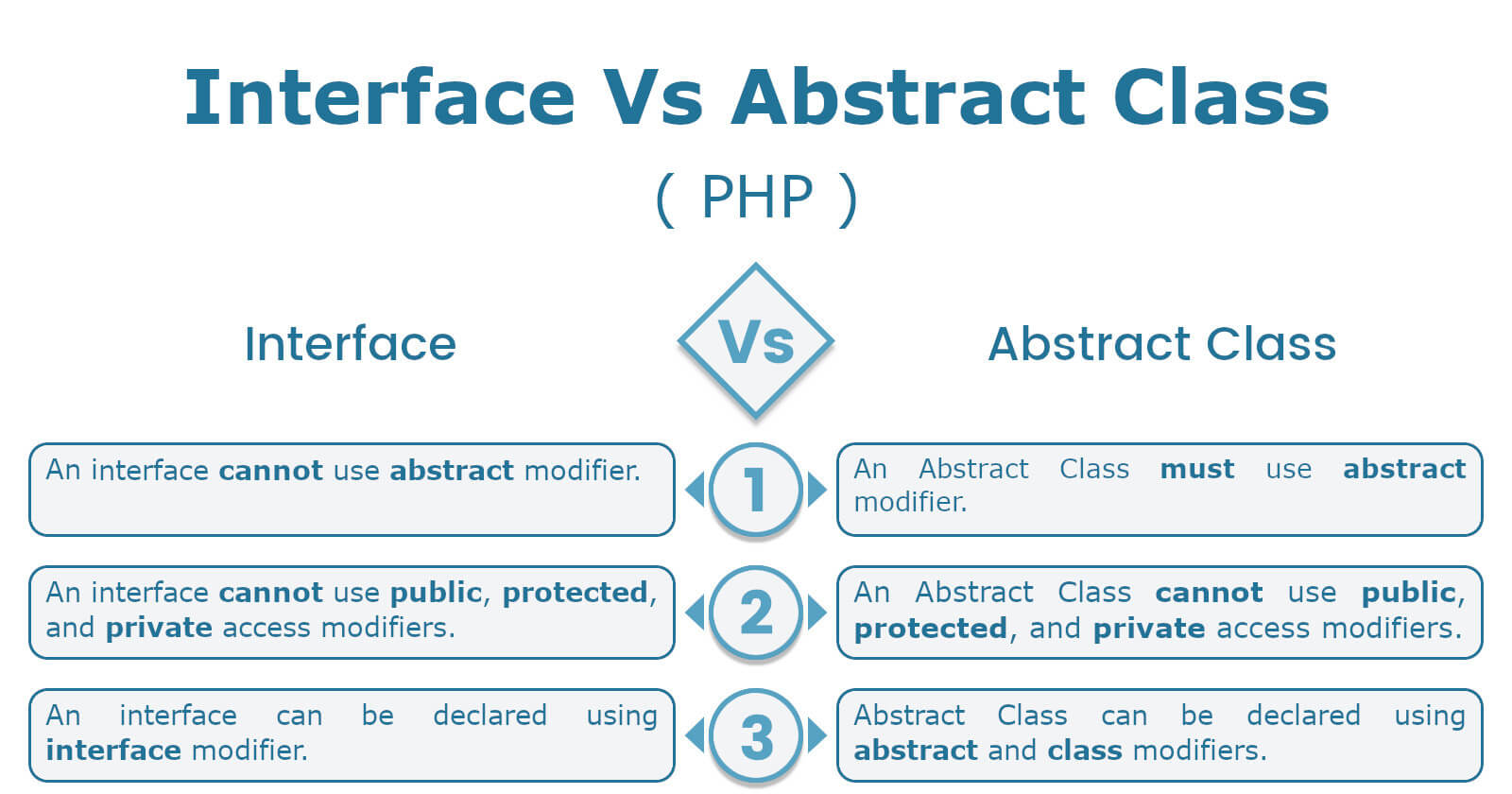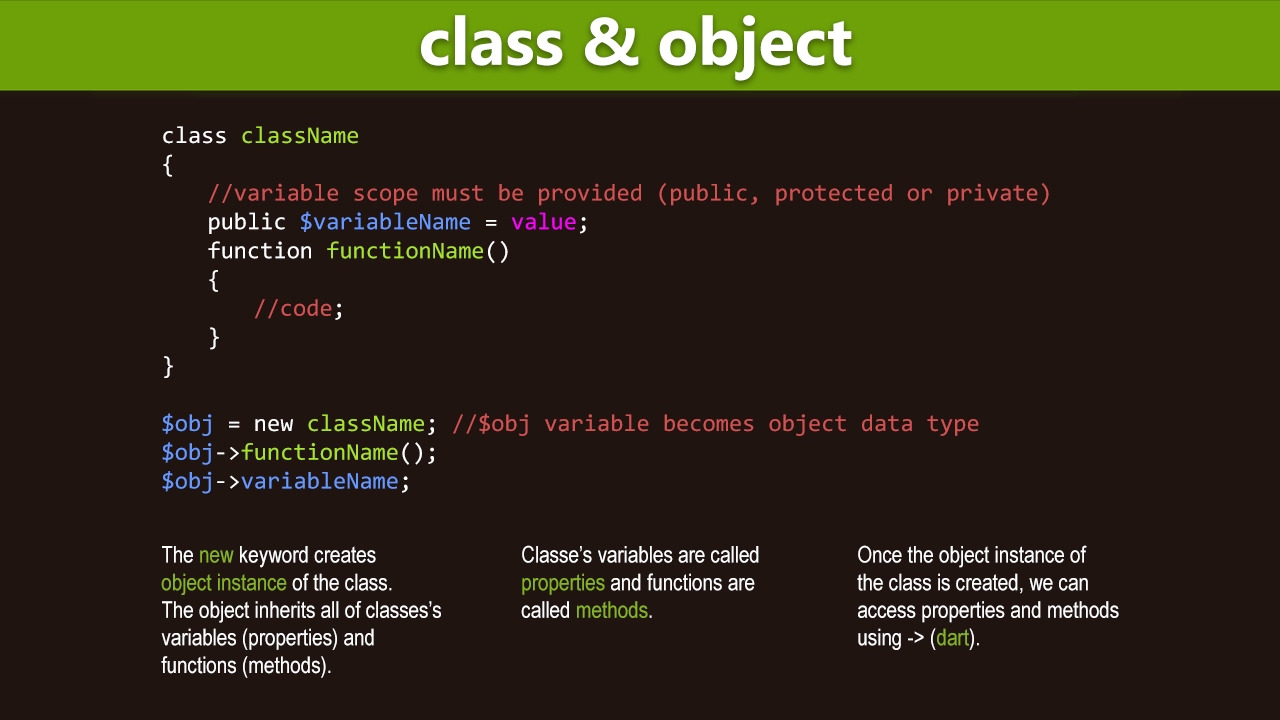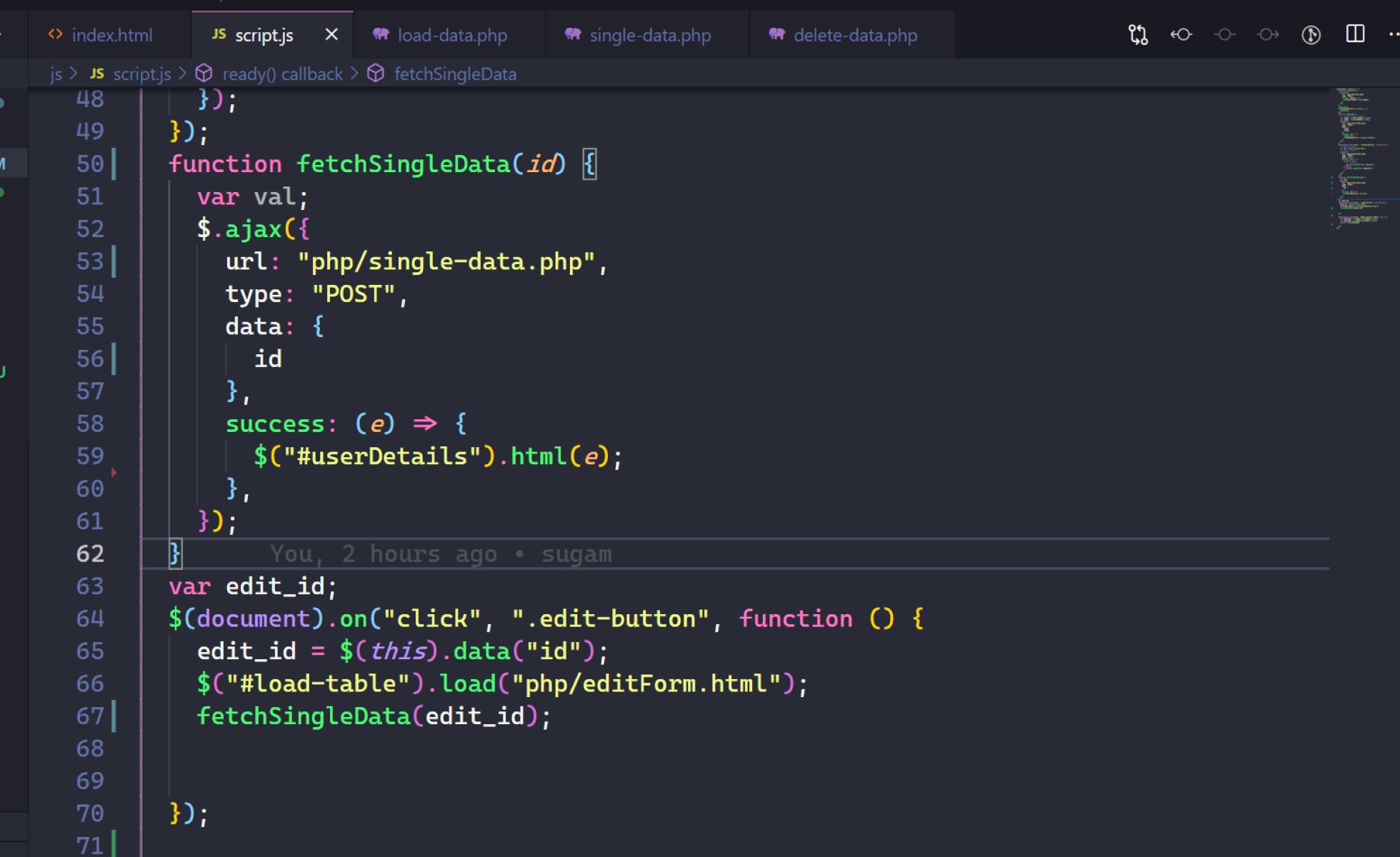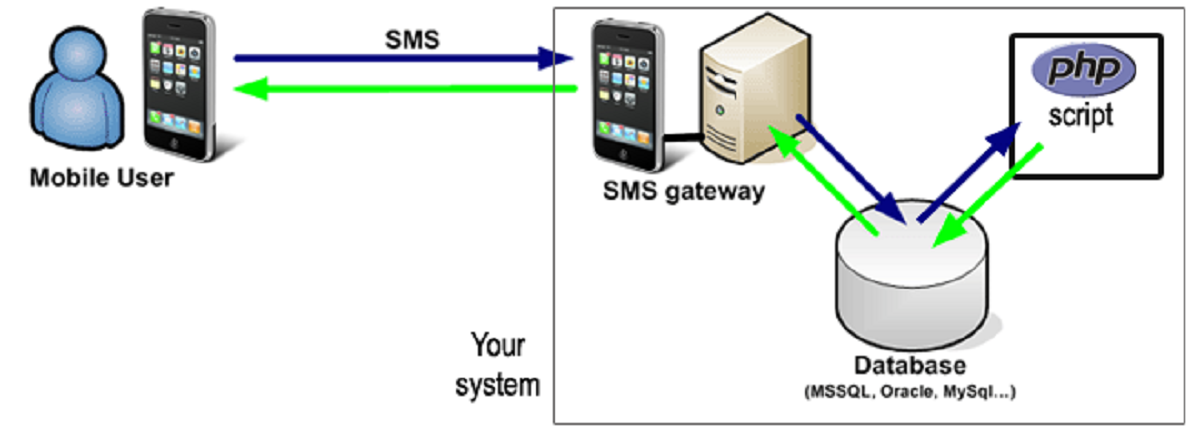Introduction
A constructor is an essential part of object-oriented programming in PHP. It is a special method that is automatically called when an object of a class is created. Constructors allow you to initialize the properties of an object and perform any necessary setup tasks.
At its core, a constructor is a function that has the same name as the class it belongs to. When you create an instance of a class with the `new` keyword, the constructor is executed automatically, without needing to explicitly call it. This makes constructors a powerful tool for setting up the initial state of an object.
In PHP, constructors can have parameters, allowing you to pass values to the constructor when creating an object. These parameters can be used to customize the initialization of the object, providing flexibility and reusability in your code.
Access modifiers, such as public, private, and protected, can also be applied to constructors. These modifiers control the visibility of the constructor, determining whether it can be accessed from outside the class or only within the class and its subclasses.
Additionally, PHP supports magic methods, including the special `__construct()` method, which serves as the constructor. Magic methods are predefined functions that have special behaviors in the context of object-oriented programming. The `__construct()` method allows you to implement custom logic in your constructors, giving you more control over the initialization process.
In this article, we will explore the concept of constructors in PHP, their importance, how to create them, and the various features and possibilities they offer. By the end of this article, you will have a solid understanding of constructors and be able to effectively use them in your PHP projects.
What is a constructor in PHP?
In PHP, a constructor is a special method that is automatically called when an object of a class is created. It has the same name as the class itself and is defined using the `__construct()` method.
The main purpose of a constructor is to initialize the properties (also known as attributes or variables) of an object. It allows you to set default values, assign initial values based on provided parameters, or perform other initialization tasks that are necessary for the object to function correctly.
One important characteristic of a constructor is that it is executed automatically when an object is created using the `new` keyword. This means that you don’t need to explicitly call the constructor; it is called implicitly as soon as the object is instantiated. This automatic execution ensures that the object is properly initialized before it is used in your code.
Constructors can be particularly useful when you have complex objects that require certain setup steps. For example, if you have a `Car` class, the constructor can initialize the properties such as the car’s make, model, color, and other relevant details. By doing so, you ensure that every newly created `Car` object starts with the correct initial values.
It’s important to note that a class can have only one constructor. This means that you cannot define multiple constructors with different parameter sets. If you need to create objects with different initialization options, you can achieve this by using optional parameters in the constructor and providing default values.
In summary, a constructor in PHP is a special method that is automatically called when an object of a class is created. Its main purpose is to initialize the properties of the object. By using constructors, you can ensure that objects are properly set up and ready to use as soon as they are created.
Why use constructors?
Constructors play a crucial role in object-oriented programming in PHP. Here are some key reasons why constructors are important and beneficial:
- Initialization: Constructors allow for the initialization of object properties to default or specific values. This ensures that the object is in a valid and usable state as soon as it is created.
- Consistency: By using constructors, you can enforce specific initialization logic across all instances of a class. This helps maintain consistency and avoids potential errors or inconsistencies caused by manual property assignment.
- Code reusability: Constructors enable code reusability by allowing you to define common initialization tasks in a central location. This means that you can easily create multiple instances of a class with consistent initialization without duplicating code.
- Flexibility: Constructors can accept parameters, allowing objects to be initialized with custom values. This allows for the creation of objects with varying initial states, enhancing the flexibility and adaptability of your code.
- Dependency injection: Constructors are often used for dependency injection, where dependencies are passed into the constructor as parameters. This promotes decoupling and modular design, making your code more maintainable and testable.
- Error handling: Constructors can include error handling mechanisms to check for invalid inputs or conditions during initialization. This helps catch and handle potential errors early on, ensuring that the object is properly set up and preventing issues later in the code execution.
By using constructors effectively, you can significantly improve the structure, maintainability, and reliability of your PHP code. They provide a standardized way to initialize objects, promote code reuse, and facilitate proper error handling. Embracing constructors as a fundamental part of your object-oriented programming approach can lead to more efficient and robust code.
Creating a constructor in PHP
In PHP, creating a constructor is a straightforward process. To define a constructor for a class, you need to declare a method with the same name as the class itself, using the `__construct()` function.
Here’s an example of how to create a basic constructor:
php
class MyClass {
public function __construct() {
// Constructor code goes here
}
}
Inside the `__construct()` method, you can add any initialization code you need for your object. This can include assigning default values to properties, setting up connections to databases or external services, or performing any other necessary setup tasks.
When an object of a class with a constructor is created using the `new` keyword, the constructor is automatically executed, ensuring that the object is properly initialized:
php
$obj = new MyClass(); // The constructor is called automatically
It’s important to note that if you don’t provide a constructor explicitly, PHP will create a default constructor for you. This default constructor does not perform any specific initialization tasks, but it can be useful in certain scenarios.
Also, as mentioned earlier, you can define parameters for the constructor if you need to pass values during object creation. Here’s an example:
php
class Car {
private $make;
private $model;
public function __construct($make, $model) {
$this->make = $make;
$this->model = $model;
}
}
$myCar = new Car(“Toyota”, “Camry”); // Creating a Car object with custom make and model
In this example, the constructor accepts two parameters, `$make` and `$model`, which are used to assign values to the corresponding properties of the `Car` object.
By creating constructors in your PHP classes, you can ensure that objects are properly initialized when they are instantiated, setting them up for correct usage in your code.
Using parameters in constructors
In PHP, constructors can accept parameters, allowing you to pass values to the constructor when creating an object. This flexibility enables you to initialize object properties with custom values right from the start.
To use parameters in constructors, you simply need to define the necessary parameters in the constructor’s declaration. When creating an object, you can then provide the corresponding values for those parameters.
Here’s an example that demonstrates the usage of parameters in constructors:
php
class Person {
private $name;
private $age;
public function __construct($name, $age) {
$this->name = $name;
$this->age = $age;
}
}
$person = new Person(“John”, 30);
In this example, the `Person` class has a constructor that accepts two parameters: `$name` and `$age`. The values passed when creating a `Person` object are assigned to the corresponding properties.
Using parameters in constructors provides flexibility and customization options. It allows you to create objects with different initial states based on the provided values. This can be particularly helpful when working with classes that require specific information during initialization.
Furthermore, using parameters in constructors facilitates the concept of dependency injection. By passing objects or values through the constructor, you can establish proper dependencies between objects and improve code modularity.
It’s worth noting that when using constructors with parameters, it’s important to provide the correct number and order of values when creating objects. Failing to do so will result in a runtime error.
By leveraging the ability to use parameters in constructors, you can create more versatile and customizable objects in your PHP applications.
Access modifiers in constructors
In PHP, access modifiers such as public, private, and protected can be applied to constructors, allowing you to control the visibility and accessibility of the constructor within and outside of the class.
The default access modifier for a constructor is public if no access modifier is specified explicitly. This means that the constructor can be accessed from anywhere in the code.
Let’s explore the different access modifiers that can be used in constructors:
- Public: A public constructor can be accessed from anywhere, both within and outside of the class. This is the default behavior when no access modifier is specified.
- Private: A private constructor can only be accessed from within the class itself. It cannot be called directly from outside the class. Private constructors are often used in conjunction with other static methods or design patterns to control object creation.
- Protected: A protected constructor can only be accessed from within the class itself and its subclasses. It cannot be accessed from outside the class hierarchy. Protected constructors are useful when you want to restrict object creation to certain classes or subclasses.
Here’s an example that demonstrates the usage of different access modifiers in constructors:
php
class MyClass {
public function __construct() {
// Public constructor
}
private function __construct() {
// Private constructor
}
protected function __construct() {
// Protected constructor
}
}
When using access modifiers in constructors, it’s essential to consider the intended use and requirements of your class. Public constructors are typically used when the class should be freely accessible for object creation. Private or protected constructors, on the other hand, are utilized for more controlled or restricted object creation scenarios.
By utilizing access modifiers in constructors, you can enforce encapsulation and control the visibility of the constructor, ensuring that objects are created and initialized in the desired manner.
Magic methods in constructors
In PHP, magic methods are predefined functions that have special behaviors within the context of object-oriented programming. The `__construct()` method serves as the constructor for a class and is one of the magic methods available in PHP.
Magic methods provide a way to implement custom logic and functionalities in constructors, in addition to the regular property initialization. They allow you to enhance the capabilities of the constructor and have more control over the initialization process.
Here are some common use cases for magic methods in constructors:
- Initializing additional properties: Along with the regular property initialization, you can use the constructor to set additional properties or perform complex calculations based on the provided values.
- Validating input values: Magic methods in constructors can be used to validate the input values or parameters passed during object creation. You can add validation logic to ensure that the object is properly instantiated with valid data.
- Performing setup or initialization tasks: Magic methods can execute any necessary setup or initialization tasks required by the object. This could include establishing database connections, loading configuration files, or fetching initial data from external sources.
- Implementing default behavior: Magic methods can define default behavior for certain properties or actions. For example, you can set default values for properties if no values are provided during object creation.
- Triggering events or hooks: Magic methods can be used to trigger events or hooks during the object’s initialization process. This allows you to have custom actions executed at specific points in the constructor.
To implement a magic method in a constructor, you simply define the desired logic within the `__construct()` method of your class. This allows you to customize the behavior of the constructor based on your specific requirements.
Using magic methods in constructors provides a powerful way to extend the functionality and customization options of your classes. They enable you to go beyond the basic property initialization and perform additional tasks during object creation.
Conclusion
Constructors are an essential component of object-oriented programming in PHP. They provide a way to initialize objects, set their initial state, and perform any necessary setup tasks. By using constructors, you can ensure that objects are properly initialized before they are used in your code.
In this article, we have discussed the concept of constructors in PHP, their importance, and their various features. We explored how to create constructors, including the use of parameters and access modifiers. We also touched upon the use of magic methods to enhance the functionality of constructors.
Constructors offer numerous benefits, including code reusability, flexibility, consistency, and error handling. They enable you to establish proper dependencies, customize object initialization, and maintain a clean and organized codebase.
Understanding and effectively using constructors in your PHP projects will enhance the structure, maintainability, and reliability of your code. They provide a reliable and consistent way to initialize objects and ensure that they are ready for use, ultimately improving the overall quality of your software.
By leveraging the power of constructors, you can build robust and efficient PHP applications that are easier to maintain and extend in the long run.







